
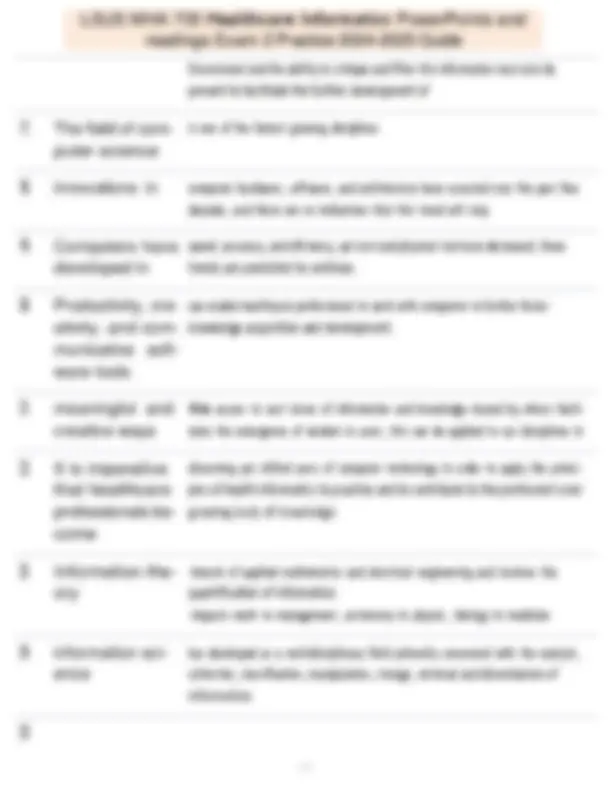
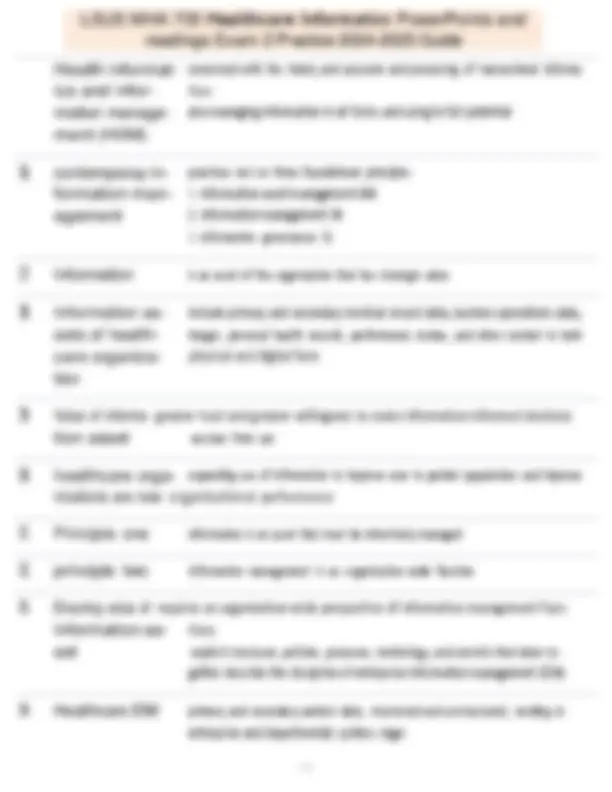
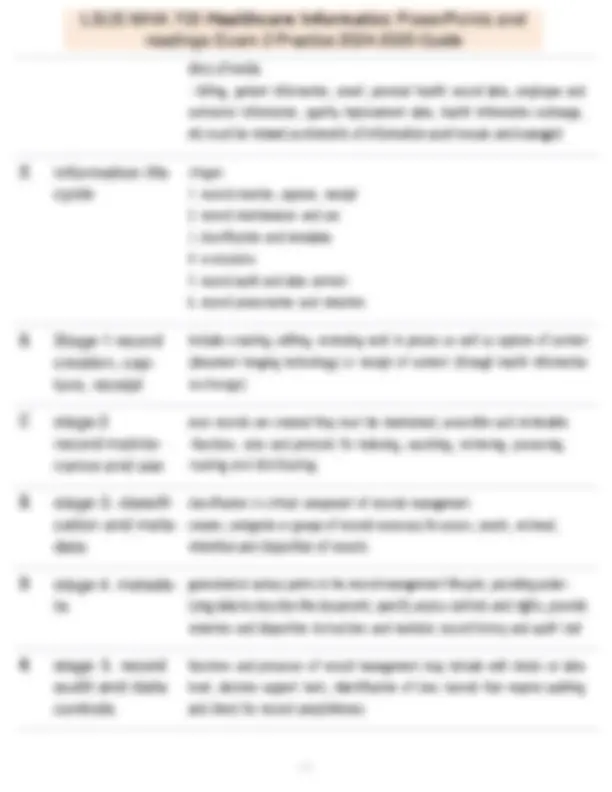
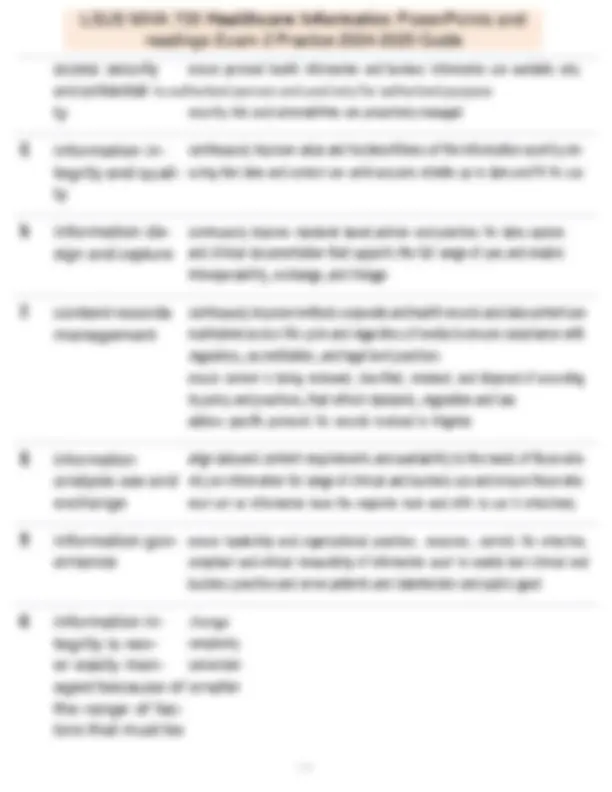
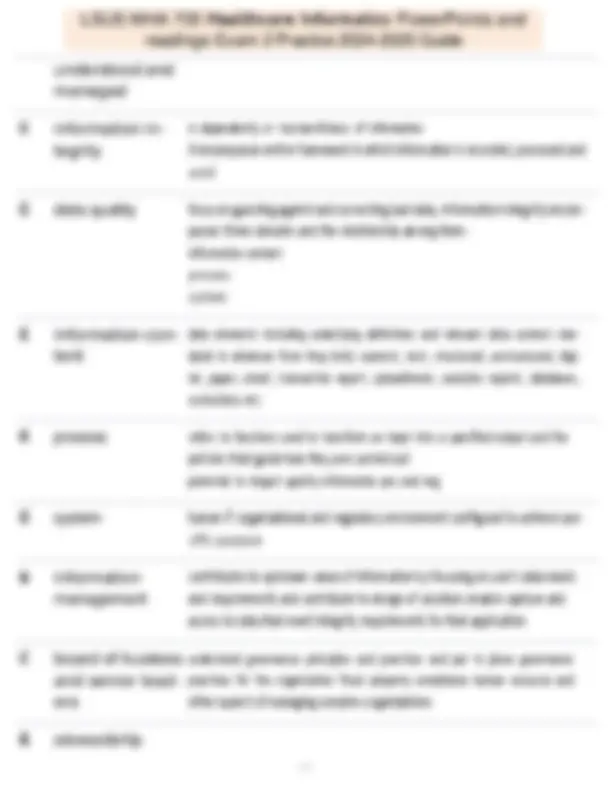
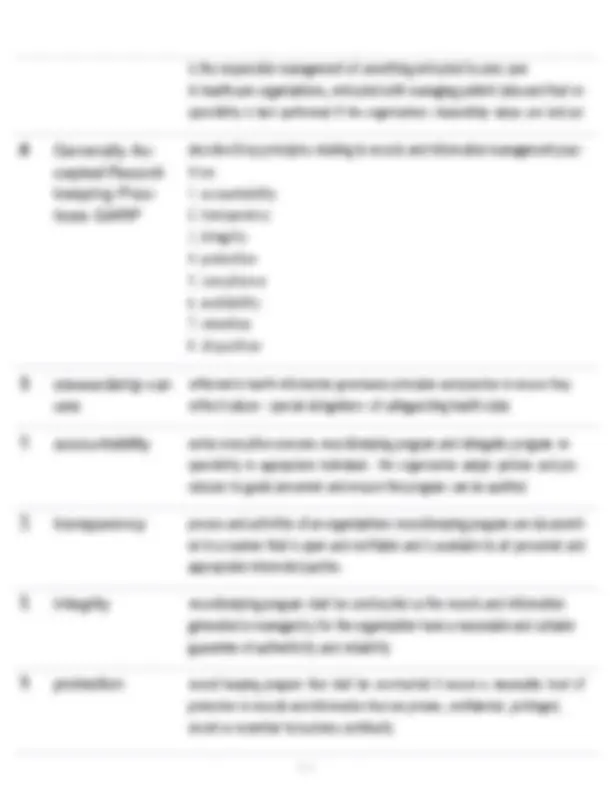
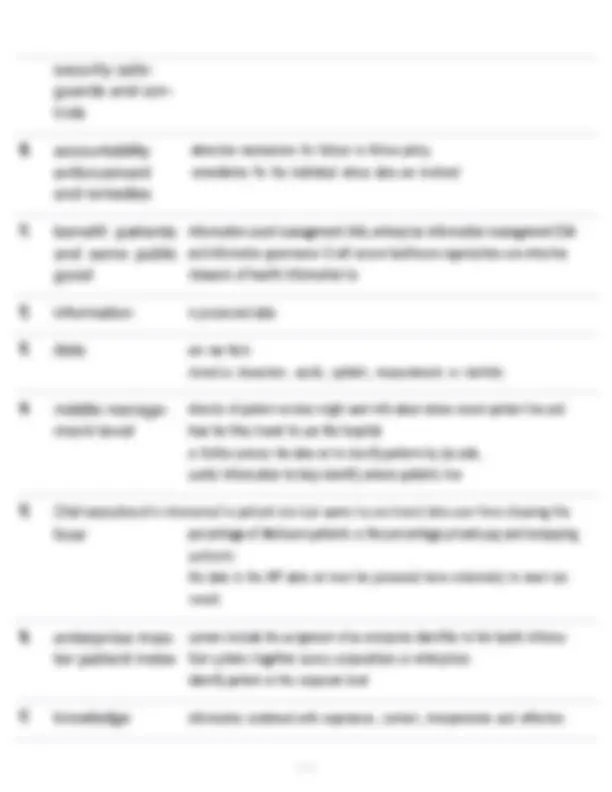
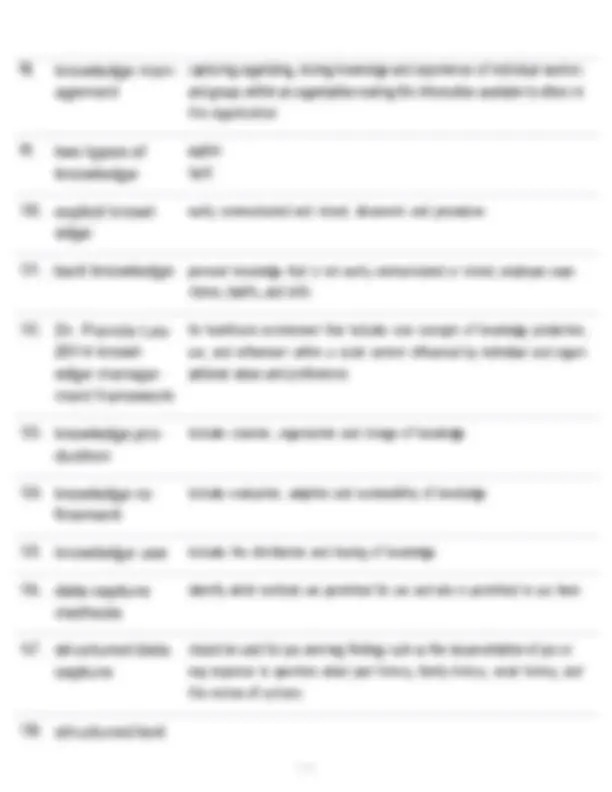
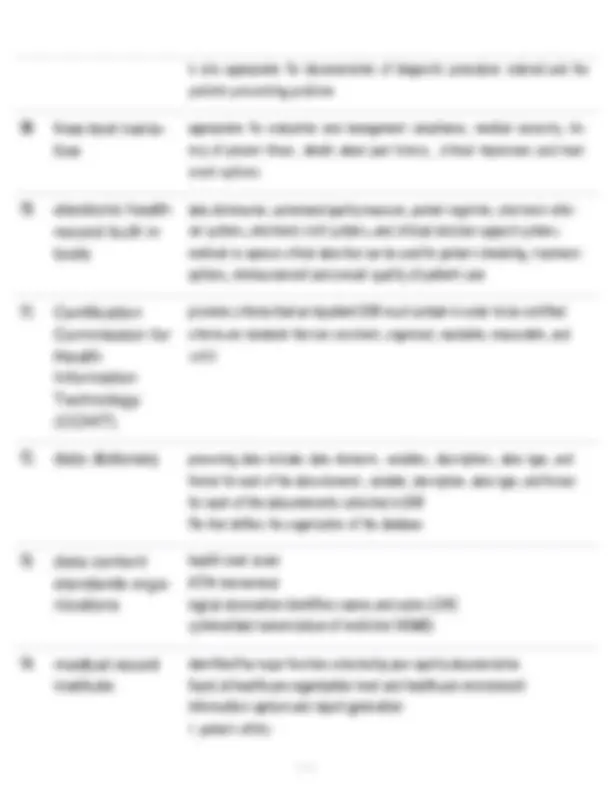
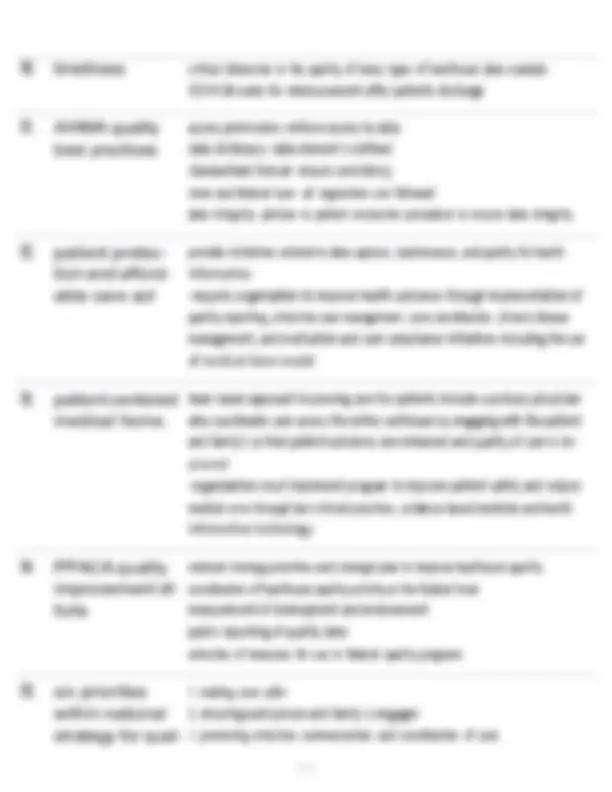
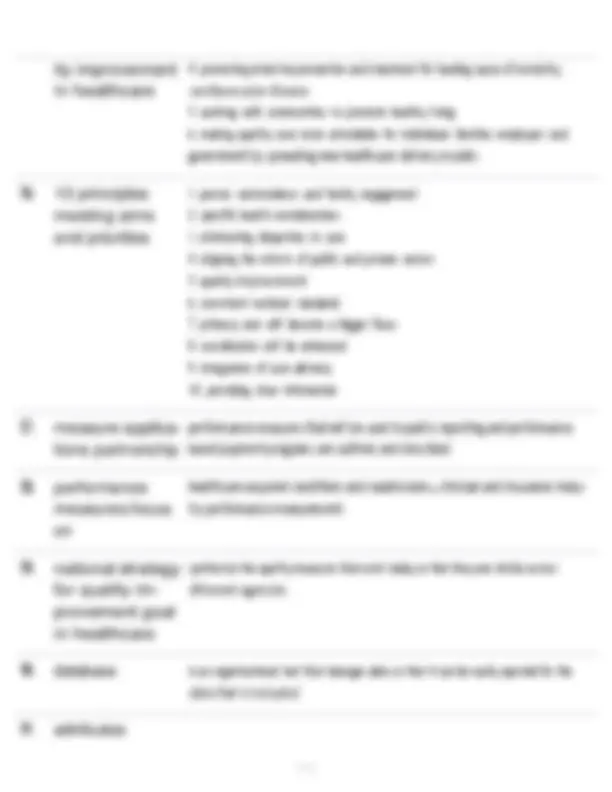
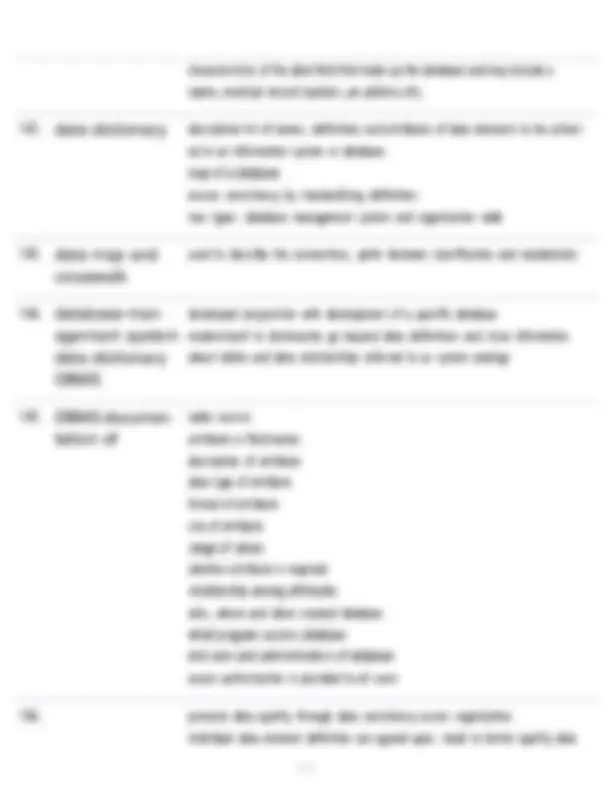
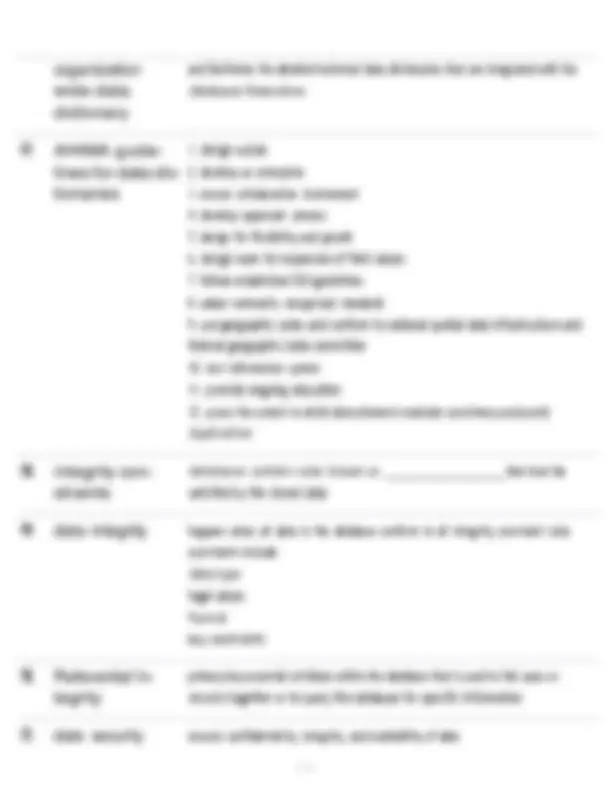
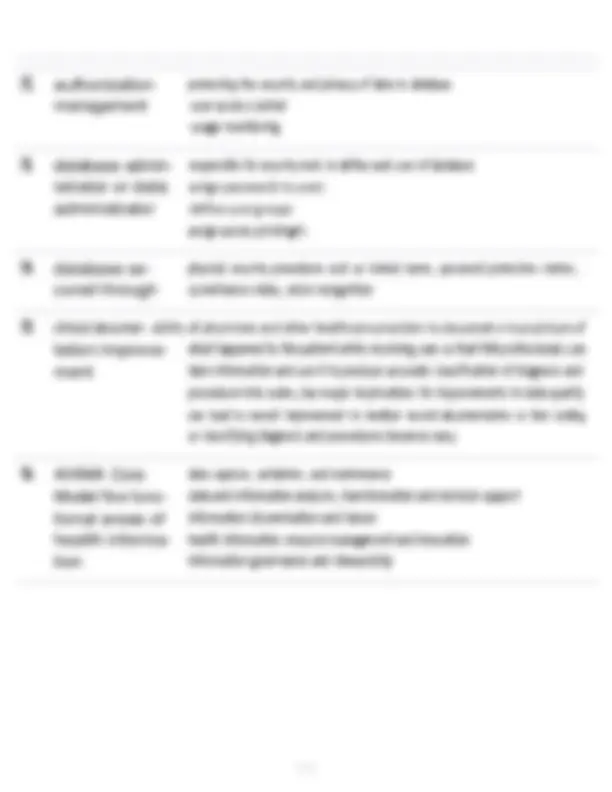


Study with the several resources on Docsity

Earn points by helping other students or get them with a premium plan


Prepare for your exams
Study with the several resources on Docsity

Earn points to download
Earn points by helping other students or get them with a premium plan
Community
Ask the community for help and clear up your study doubts
Discover the best universities in your country according to Docsity users
Free resources
Download our free guides on studying techniques, anxiety management strategies, and thesis advice from Docsity tutors
LSUS MHA 705 Healthcare Informatics PowerPoints and readings Exam 2 Practice 2024-2025 Guide
Typology: Exams
1 / 22

This page cannot be seen from the preview
Don't miss anything!















is introduced through a focus on computers and the hardware and software that make up these evolving systems
if used skillfully, can facilitate the acquisition and manipulation of data and information by healthcare professionals, who can then synthesize these into an evolving knowledge and wisdom base
via a variety of devices, process data through logical and arithmetic rendering, store the data in memory components, and output data and information to the user.
a computer is an that serves as a tool to manipulate data and information
The easiest way to begin to understand computers is to realize they are
-Uses specific software, depending on the application and data involved -One key hardware component, the computer monitor, is a unique example because it is the part of the computer focused on the most when users are working on a computer.
manipulating the mouse and keyboard, but the monitor receives the user's atten- tion.
Users are able to contribute to the development of knowledge through the use of
Scholars and researchers are just beginning to understand the ettect that tems, archi- tecture, appli- cations, and processes
have on the potential for knowledge acquisition and development.
Users are able to disseminate knowledge on a grand scale with other users via
nized by the user.
Health informat- ics and infor- mation manage- ment (HIIM)
concerned with the timely and accurate and processing of transactional informa- tion. also managing information in all forms and using to full potential
practices rest on three foundational principles
include primary and secondary medical record data, business operations data, images, personal health records, performance review, and other content in both physical and digital form
-accrues from use
expanding use of information to improve care to patient populations and improve nizations are now organizational performance
tions -explicit structures, policies, processes, technology, and controls that taken to- gether describe the discipline of enterprise information management (EIM)
dless of media
stages
includes creating, editing, reviewing work in process as well as capture of content (document imaging technology) or receipt of content (through health information exchange)
once records are created they must be maintained, accessible and retrievable -functions, rules and protocols for indexing, searching, retrieving, processing, routing and distributing
classification is critical component of records management. creates, categories or groups of records necessary for access, search, retrieval, retention and disposition of records
generated at various points in the record management lifecycle, providing under- lying data to describe the document, specify access controls and rights, provide retention and disposition instructions and maintain record history and audit trail
functions and processes of record management may include edit checks at data level, decision support tools, identification of class records that require auditing and check for record completeness
information integrity and quality access, security and confidentiality
-will have mechanisms to track who uses data, and how it is used -assess the reliability of information to ensure that it is line with the criticality of these uses -ensure those who view data and information are authorized -understand how long information should be retained and in what form -ensure internal learning system or feedback loop for information management policies and practices are adapting and improving
is grounded in recognition of an individuals right to control the acquisition, use and disclosure of his or her identifiable health data
of information asset management.
result in damage to reputation of organization, employees, and aflliates and compromise trust of patient, stakeholders, and communities. result in monetary damages and diminish the value of information asset
EIM information integrity and quality information design and capture content records management information analysis use and exchange information governance
access security ensure personal health information and business information are available only and confidentiali- to authorized persons and used only for authorized purposes ty
security risks and vulnerabilities are proactively managed
continuously improve value and trustworthiness of the information asset by en- suring that data and content are valid accurate reliable up to date and fit for use
continuously improve standards based policies and practices for data capture and clinical documentation that supports the full range of uses and enable interoperability, exchange, and linkage
continuously improve methods corporate and health records and data content are maintained across life cycle and regardless of media to ensure compliance with regulatory, accreditation, and legal best practices ensure content is being reviewed, classified, retained, and disposed of according to policy and practices, that reflect standards, regulation and law address specific protocols for records involved in litigation
align data and content requirements and availability to the needs of those who rely on information for range of clinical and business use and ensure those who must act on information have the requisite tools and skills to use it ettectively
ensure leadership and organizational practices, resources, controls for ettective, compliant and ethical stewardship of information asset to enable best clinical and business practice and serve patients and stakeholders and public good
change complexity conversion corruption
is the responsible management of something entrusted to ones care in healthcare organizations, entrusted with managing patient data and that re- sponsibility is best performed if the organizations stewardship values are laid out
describe 8 key principles relating to records and information management prac- tices
reflected in health information governance principles and practice to ensure they reflect nature - special obligations- of safeguarding health data
information governance management confidentiality and data protection assurance information security assurance clinical information assurance secondary use assurance corporate information assurance
requires information governance framework, approved policies with strategies and improvement plans and training for statt also require all contracts
information management agenda is supported by adequate confidentiality and data protection skills, knowledge, and experience including appropriate proce- dures for informing and securing consents from patients, release of information, monitoring access to personal health information
the information management agenda is supported by adequate security skills, knowledge and experience; formal security risk assessment and management programs for key information assets and security incident process and business continuity planning
security safe- guards and con- trols
-detection mechanisms for failure to follow policy -remediation for the individual whose data are involved
information asset management IAM, enterprise information management EIM and information governance IG will ensure healthcare organizations are ettective stewards of health information to
director of patient services might want info about where recent patient live and how far they travel to use the hospital or further process the data set to classify patients by zip code, useful information to help identify where patients live
percentage of Medicare patients vs the percentage private pay and nonpaying patients the data in the MPI data set must be processed more extensively to meet ceo needs
systems include the assignment of an enterprise identifier to link health informa- tion systems together across corporations or enterprises identify patient at the corporate level
capturing organizing, storing knowledge and experiences of individual workers and groups within an organization making this information available to others in the organization
explicit tacit
easily communicated and stored; documents and procedures
for healthcare environment that includes core concepts of knowledge production, use, and refinement within a social context influenced by individual and organi- zational values and preferences
includes creation, organization and storage of knowledge
includes evaluation, adaption and sustainability of knowledge
identify which methods are permitted for use and who is permitted to use them
should be used for pos and neg findings such as the documentation of pos or neg responses to questions about past history, family history, social history, and the review of systems
the process of recording representations of human thought, perceptions, or actions in documenting patient care as well as device generated information that is gathered and/or computed about a patient as part of healthcare
handwriting, speaking, word or phrases, videotaping, audio recording, and gen- erating digital images through xrays and scans
formatting/structure if captured information. analyzing, organizing, and pre- senting recorded patient information for authorization and inclusion in patients healthcare record
unique identification of patient accuracy completeness timeliness interoperability retrievability authentication and accountability auditability confidentiality and security
all required data items are included - ensure that entire scope of data is collected and document intentional limitations
ity improvement in healthcare
performance measures that will be used in public reporting and performance based payment programs are outlines and described
healthcare acquired conditions and readmissions, clinician and insurance indus- try performance measurement.
synthesize the quality measures that exist today so that they are similar across ditterent agencies
characteristics of the data field that make up the database and may include a name, medical record number, an address etc.